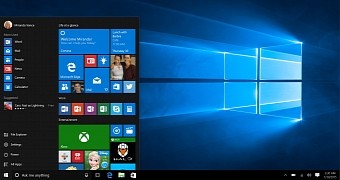Microsoft is offering Windows 10 as a free upgrade for those on Windows 7 and 8.1, but this promo is coming to an end in less than 30 days, and the new operating system will only be available with a paid license beyond this date.
Windows 10 launched on July 29, 2015, and in order to support early adoption, Microsoft decided to offer it completely free to users who perform the upgrade in the first year of availability. This means that, once you upgrade to Windows 10 and you complete the product activation, the operating system remains entirely free during the entire supported lifetime of your device.
There are still users out there who believe that Windows is adware or just a trial, but that’s entirely wrong. Windows 10 is completely free, and this one-year upgrade window means that you had 12 months to perform the upgrade, and not that the operating system is free just for one year. So once you upgrade to Windows 10 at any moment before July 29, 2016, it remains completely free for your device.
300 million devices running Windows 10
Without a doubt, offering the upgrade free of charge was the main catalyst for the rapid growth of Windows 10, so the operating system is now powering more than 300 million devices, according to the company’s most recent statistics - new figures in this regard are expected to be provided in the coming weeks, though.
Furthermore, market share data shows that Windows 10 has already become the second most used desktop operating system in the world, overtaking Windows 7 and 8.1 and eating up the former’s market share. If the same growing trend is maintained, Windows 10 should become the leading desktop OS by this time the next year.
With all those being said, remember that you have less than 30 days to upgrade to Windows 10 and benefit from the free upgrade offer. If you still can’t decide whether Windows 10 is the right choice or not, it’s worth knowing that you can always upgrade and then downgrade to your current OS version with a built-in feature that lets you do that.

 14 DAY TRIAL //
14 DAY TRIAL //